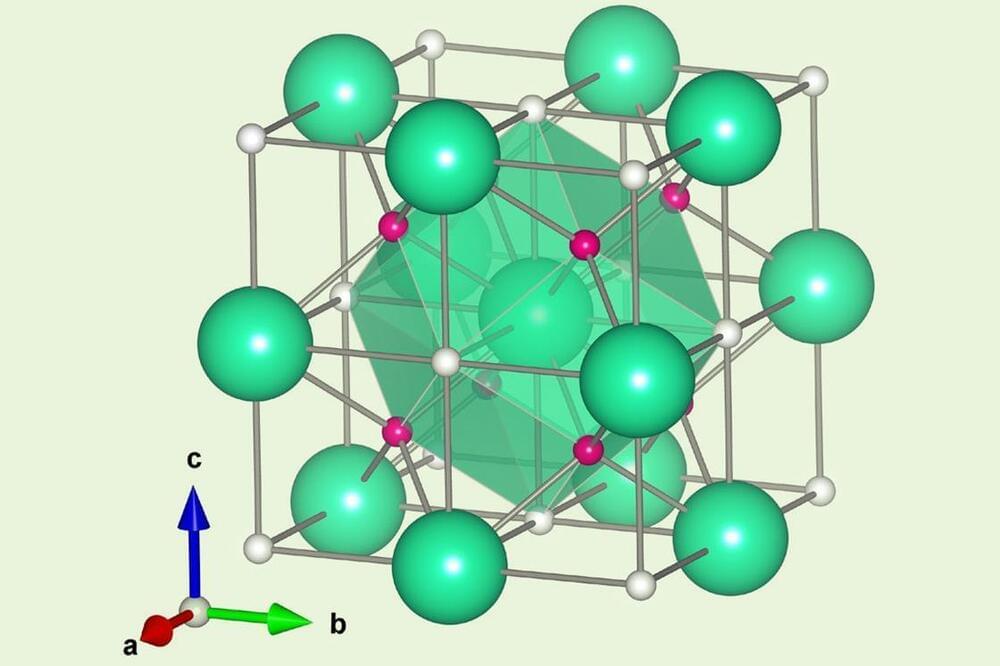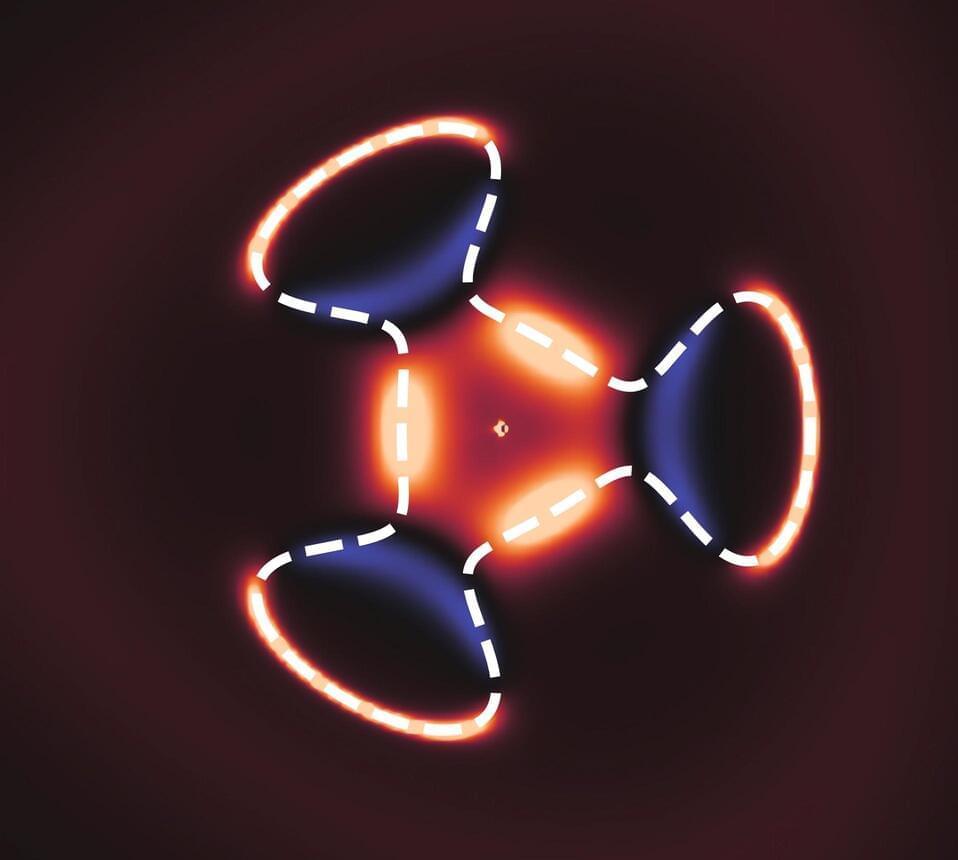A scaled-up spintronic probabilistic computer.



A team of Rutgers scientists dedicated to pinpointing the primordial origins of metabolism—a set of core chemical reactions that first powered life on Earth—has identified part of a protein that could provide scientists clues to detecting planets on the verge of producing life.
The research, published in Science Advances, has important implications in the search for extraterrestrial life because it gives researchers a new clue to look for, said Vikas Nanda, a researcher at the Center for Advanced Biotechnology and Medicine (CABM) at Rutgers.
Based on laboratory studies, Rutgers scientists say one of the most likely chemical candidates that kickstarted life was a simple peptide with two nickel atoms they are calling “Nickelback” not because it has anything to do with the Canadian rock band, but because its backbone nitrogen atoms bond two critical nickel atoms. A peptide is a constituent of a protein made up of a few elemental building blocks known as amino acids.

Companies could one day make superconductive quantum computer chips that function at room temperature thanks to a new material from researchers in the US. Ranga Dias from the University of Rochester and colleagues made a material superconductive at 21°C and pressures less than 1% of those used for existing high-temperature superconductors. ‘The most exciting part is the pressure,’ Dias tells Chemistry World. ‘Even I didn’t think this was possible.’
Together with Ashkan Salamat’s team at the University of Nevada, Las Vegas, the scientists say that electrical resistance in their nitrogen-doped lutetium hydride falls to zero at room temperature. Making room-temperature zero-resistance materials is a chemistry ‘holy grail’ and could fight climate change by reducing the 5% of electricity lost as heat while flowing through the grid.
However, Dias and Salamat’s team hasn’t been able to fully confirm the new material’s structure. As hydrogen atoms are so small they don’t easily diffract the x-rays used to work out the material’s composition. And this is an important reservation, considering the publisher of the team’s previous high-temperature superconductor paper retracted it.


If you cool down low-density atomic gas to ultralow temperatures (−273°C), you get a new state of matter called the Bose-Einstein Condensate (BEC). A BEC has strongly coupled two-atom molecules behaving like a collective wave following quantum mechanics. If you reduce the pairing strength between them—for example, by increasing the magnetic field—the atoms form Cooper pairs according to Bardeen-Cooper-Schrieffer (BCS) theory (which won a Nobel Prize).
The process is called BCS-BEC crossover. And the theory forms the basis of superfluids and superconductors, materials that do not display viscosity or electrical resistance. Hiroyuki Tajima and his team from the University of Tokyo proposed a new method to distinguish current carriers in the BCS-BEC crossover. The key is in the fluctuations of current.
Electronic devices display images thanks to electrons moving in a conductor—aka single-particle current. Your device may heat up due to the resistance caused by collisions of electrons in the conductor that dissipate electric energy as heat. But superconductors show zero resistance to current flow, saving lots of energy. This is possible because of paired electrons, which would have otherwise repelled each other due to their negative charge. In other words, the current in superconductors is mainly due to the pair-tunneling transport involving moving paired-current carriers rather than a single-particle current carrier.

The researchers used instruments known as optical traps to throw and catch individual atoms. Scientists have created what they describe as “the world’s smallest ball game with atoms”. Researchers in South Korea have made atoms – the smallest unit of matter – move like balls through the air using a technology known as optical traps.

Researchers have found a way to predict the behavior of many-body quantum systems coupled to their environment. The work represents a way to protect quantum information in quantum devices, which is crucial for real-world applications of quantum technology.
In a study published in Physical Review Letters, researchers at Aalto University in Finland and IAS Tsinghua University in China report a new way to predict how quantum systems, such as groups of particles, behave when they are connected to the external environment. Usually, connecting a system such as a quantum computer to its environment creates decoherence and leaks, which ruin any information about what’s happening inside the system. Now, the researchers developed a technique that turns that problem into its a solution.
The research was carried out by Aalto doctoral researcher Guangze Chen under the supervision of Professor Jose Lado and in collaboration with Fei Song from IAS Tsinghua. Their approach combines techniques from two domains, quantum many-body physics and non-Hermitian quantum physics.

Graphene is a strange material. Understanding its properties is both a fundamental question of science and a promising avenue for new technologies. A team of researchers from the Institute of Science and Technology Austria (ISTA) and the Weizmann Institute of Science has studied what happens when they layer four sheets of it on top of each other and how this can lead to new forms of exotic superconductivity.
Imagine a sheet of material just one layer of atoms thick—less than a millionth of a millimeter. While this may sound fantastical, such a material exists: it is called graphene.
Graphene is an allotrope of carbon in the form of a single layer of atoms in a two-dimensional hexagonal lattice in which one atom forms each vertex. It is the basic structural element of other allotropes of carbon, including graphite, charcoal, carbon nanotubes, and fullerenes. In proportion to its thickness, it is about 100 times stronger than the strongest steel.
Year 1997 Basically this detailed the use of magnetism to levitate frogs.
When pigs fly? That could be sooner than you think. A group of researchers in the Netherlands and in England has made a frog levitate in a magnetic field. Although the feat might seem no more than a curiosity, researchers say that the floating amphibians may lead the way to a cheap alternative to space-based science experiments.
Many materials are diamagnetic—that is, when placed near a magnet, their atoms fight the magnetic field, and the object tries to scoot away. If such a material is placed in a strong enough magnetic field, it levitates. Superconductors, for example, are perfect diamagnets and can levitate over even weak magnets, which is why levitating trains like those in Japan can fly over the tracks. Organic material like living cells is very weakly diamagnetic, says J. C. Maan, a physicist at the University of Nijmegen in the Netherlands. So he and colleagues employed a very strong magnet (chiefly used for crystallography experiments) to float the frog. It took 16 teslas—a very powerful field indeed—to lift the confused amphibian off the ground.
“It’s a little surprising how easy it is to do this,” says James Brooks, a physicist at the National High Magnetic Field Laboratory in Tallahassee, Florida. “It’s not incredibly exotic equipment. Any scientist who is awake will ask ‘What can I do with this?’” Brooks notes that the magnetic fields might provide a way to study materials in milligravity—without sending them into space—because the levitating object is in a net zero field. Researchers could study the effects of microgravity on crystal growth and also on the growth and development of living cells, without costly space missions.

A water-based detector has been used to spot antineutrinos from nuclear reactions hundreds of kilometres away. It could be used to monitor distant nuclear activities.